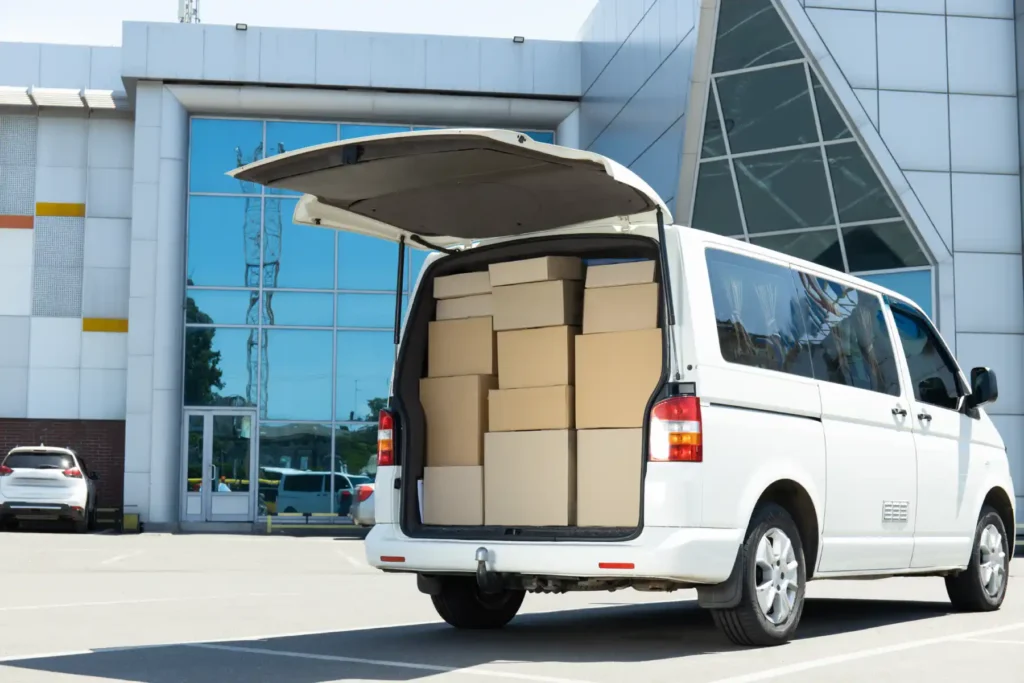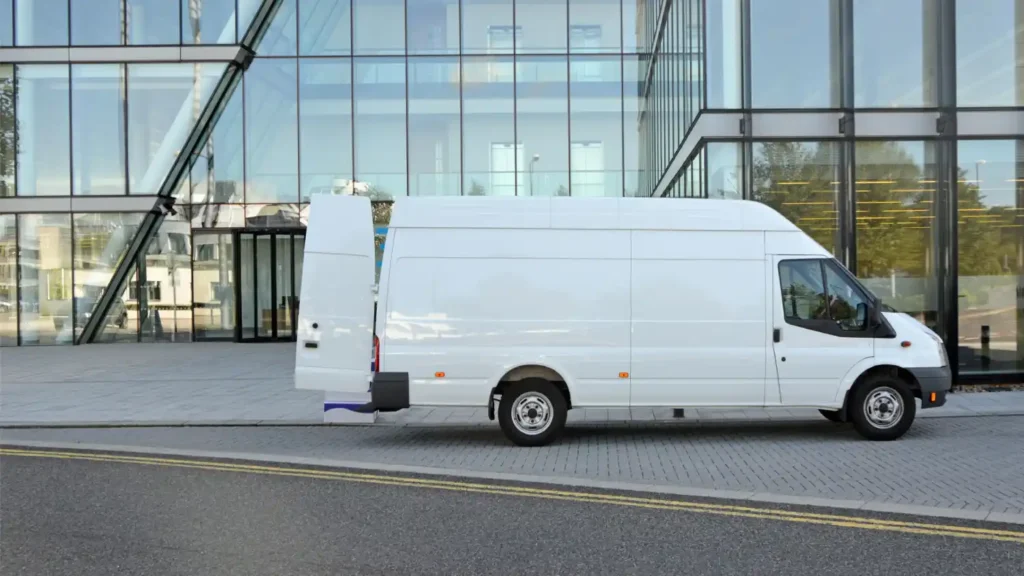
The cost of transport of goods up to three and a half tonnes depend on a number of variables that significantly affect the final price. Factors such as distance travelled, toll charges, fuel consumption or transport time play a key role in the costing. Every extra kilometre can increase fixed expenses such as wages or operating costs.
In addition, seasonal factors such as long weekends, holidays or border waiting times, which can cause delays, must also be taken into account. Proper planning and analysis of all expenses, from insurance to vehicle servicing, are essential to achieve efficient and profitable transport. All these aspects together form a comprehensive picture that needs to be taken into account when setting transport prices.
Factors Affecting the Cost of Transport Up to 3.5 T
Several key factors influence the cost of transporting goods up to 3.5 tonnes. In order to set the right price and maximise profit, it is essential to analyse the individual cost items.
Type of Goods And Weight
The type of goods transported and their weight have a major impact on the final cost. Heavier goods increase fuel consumption and may require special handling equipment, thereby increasing operating costs. Furthermore, consideration must be given to whether the goods are sensitive or non-standard packaged goods that require additional security during transport. For example, the transport of electronics or glass may require investment in protective materials.
In addition to the weight of the goods themselves, their volume also plays a role. For bulky but lightweight shipments, the rule of calculating the dimensional weight applies, which can have a major impact on the final price.

Distance A Type of Route
The length of the transport route directly determines fuel consumption and can be burdened by toll charges. In Slovakia, tolls are not charged for vehicles up to 3.5 tonnes, but for international transport, tolls are an essential part of the expenditure in many European countries. For example, the amount of the toll depends on the country, the vehicle class and the emission category of the truck.
The type of route, whether it is a motorway, urban roads or mountainous areas, affects journey times and fuel consumption. The motorway often reduces journey times but requires higher tolls. On the other hand, roads in urban or mountainous areas may have lower tolls but increase fuel costs and driver time.
Vehicle Consumption And Fuel Price
Vehicle consumption is one of the most significant factors affecting overall costs. The average consumption of vehicles up to 3.5 tonnes ranges from 8 to 12 litres per 100 km, and the price of a litre of fuel directly determines the amount of this expenditure. Increased consumption can occur with higher weight of goods or difficult terrain.
Fuel price volatility presents a complication in setting fixed prices for services. To offset the costs, some companies resort to introducing a fuel surcharge, which is calculated according to the current fuel price.
Time and Period of Carriage
The time required to carry out the transport increases the variable costs, in particular the driver's wage expenses. If the transport takes place during holidays or weekends, prices may be increased due to additional restrictions or travel bans. For example, some countries restrict heavy transport on weekends, which increases the duration of the transport and therefore the labour costs.
Seasonal factors also have an impact on price. In winter, when roads are often covered with snow and ice, fuel consumption and the risk of technical faults on the vehicle increases. Conversely, the summer season often leads to increased demand, which can affect market competition and the price of transport services.
Fixed And Variable Costs
Transport costs up to three and a half tonnes are divided into fixed costs, which are incurred irrespective of the number of transports carried out, and variable costs, the amount of which depends on the specific orders. An efficient overview of these costs is the basis for setting a competitive price.
Initial Expenses Per Vehicle
The purchase of a vehicle is a major fixed cost item. The price depends on the type and technical characteristics of the vehicle, with new vehicles ranging in the tens of thousands of euros. In addition to the purchase, it is necessary to take into account financing such as leasing, which may include an initial down payment and regular instalments.
A registration fee is payable at the time of registration, the amount of which is determined by engine power or fuel type. For example, for a vehicle up to 80 kW, the fee may be less than EUR 50, while for a vehicle above 150 kW, much higher amounts can be expected.
Maintenance And Insurance Costs
Vehicle operation includes regular maintenance, which includes expenses for service inspections, oil changes, filters and consumables. The annual cost of servicing can run into hundreds or thousands of euros, depending on the mileage and condition of the vehicle.
Fuses are an important item. Compulsory third-party insurance (CII) and accident insurance make up a significant part of the fixed costs, with the amount depending on the make, engine power and age of the driver. For example, the average for small trucks can be between €200 and €1000 per year. In the case of international transport, it is essential to include carrier's liability insurance, which is determined according to the scope of cover.

Tolls and Other Charges
Toll charges are a variable expense and depend on the country, the type of road and the distance travelled. In Slovakia, there is an electronic toll system, where rates for vehicles up to 3.5 tonnes start from EUR 0.02 per kilometre on normal roads. Abroad, for example in Austria, these charges vary and can be higher.
Other charges include parking costs at rest areas, port terminals or city centres. In addition, vehicle taxes and eco-stamp charges, which are mandatory in many European countries, must be taken into account. The combination of these charges can have a significant impact on the final cost of transport.
Optimisation of Transport Costs
Optimising the cost of transport up to three and a half tonnes requires efficient processes for planning, capacity utilisation and fleet control. Modern technology and strategic decisions significantly help to reduce expenses and increase transport efficiency.
Efficient Route Planning
Precise route planning reduces fuel consumption and reduces distances travelled. Hauliers can use TMS (Transportation Management Systems) to analyse routes and optimise transport. These tools provide an overview of the fastest and most economical routes, including international turnarounds.
Taking toll charges into account is crucial, especially in European countries with electronic toll systems. For Slovakia and neighbouring countries, it is useful for hauliers to analyse the roads with the lowest tolls. In addition, planning routes that minimise congested sections saves not only time but also fuel costs.
In crisis situations, such as accidents or road closures, dynamic planning can significantly reduce ancillary costs. Operators should integrate telematics tools into these systems that communicate up-to-date traffic information.
Combination of Shipments and Maximum Capacity Utilisation

When transporting up to three and a half tonnes, it is important to minimise empty journeys. Carriers can efficiently combine shipments from different clients to better fill vehicle capacity. For example, by using freight sharing logistics platforms, carriers can match orders according to available tonnage and scheduled routes.
The development approach includes the use of technology that tracks the utilisation of individual vehicles. Through accurate monitoring, managers can identify unused capacity and offer additional services to streamline operations. Such a solution not only reduces variable costs but also increases the company's profit margin.
Seasonal factors such as holidays or periods of increased demand are also important. The right strategy during such periods will maximise utilisation and minimise unforeseen expenses for extra journeys.
Regular Servicing and Monitoring of the Vehicle
Hauliers must ensure that their vehicles are in optimum condition. Regular maintenance, which includes changing tyres, checking fuel consumption and servicing brakes, significantly extends the life of the vehicle and reduces the risk of technical breakdowns.
Vehicle monitoring, in particular by telematics systems, provides users with real-time information on operational parameters. This includes instantaneous fuel consumption monitoring, which allows drivers' driving styles to be analysed. Common practice shows that gentle driving can reduce consumption by up to 10 %, saving carriers considerable costs.
The cost of insurance cover, including accident and compulsory insurance, is also a significant component. Regular fleet modernisation activities reduce the risk of accidents, which has a positive impact on insurance expenditure. In addition, scheduling services before seasonal peaks contributes to higher transport reliability.

Consideration of Market Trends
Changing market conditions affect the prices of transport up to 3.5 tonnes. Trend analysis allows to react to costs related to variable factors.
Fuel Prices and Inflation
Fuel prices change regularly due to global market factors and the political situation. A 10 % increase in diesel prices can immediately increase the cost of transport by around 3-5 %, depending on vehicle consumption and route length. Carriers have the option to minimize this impact by introducing fuel surcharges or by optimizing routes, which reduces consumption.
Inflation increases operating expenses not only by increasing fuel prices, but also services such as repairs, maintenance and tolls. For example, inflation in the transport sector in Slovakia was around 12 % in 2022, which directly affected the costs of transporters. Without adequate planning, fixed costs such as insurance premiums and vehicle financing can rise, putting upward pressure on prices for customers.
Competitiveness of Prices in Transport
Pricing pressure on carriers is high, especially among firms serving low-margin segments. A comparison of competitors' prices shows that strategic planning and technology upgrading play a key role in winning customers. The introduction of TMS systems reduces order processing time and allows for more flexible costing, allowing prices to be adjusted without increasing operating costs.
Combining shipments from multiple customers minimizes empty miles. Switching to more fuel-efficient vehicles or investing in alternatively fuelled vehicles is also an effective solution, which can reduce a carrier's overall costs by 15-20 % in the medium term. Such measures ensure competitive prices that can attract a wider range of customers and strengthen the stability of the company.
Summary
The cost of transporting up to three and a half tonnes is the result of a combination of several variables that affect overall efficiency and profitability. Every aspect, from route planning to the use of modern technology, plays a key role in optimising expenditure.
Carriers that focus on detailed cost analysis, regular vehicle maintenance and strategic planning can not only reduce their expenses, but also increase their competitiveness in the marketplace. Effective management and adaptation to market conditions are essential for long-term success in the transportation industry.